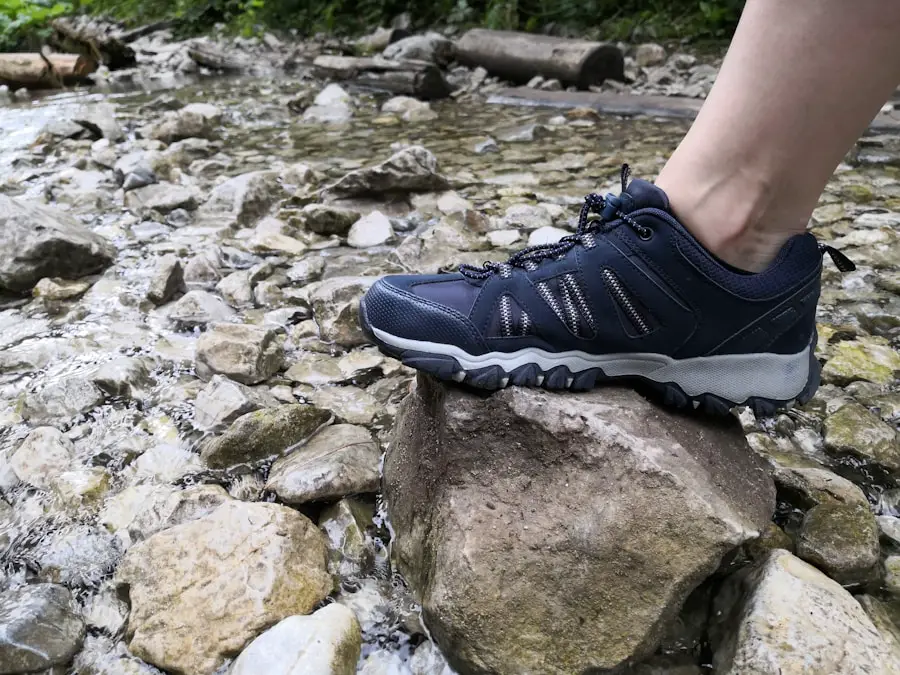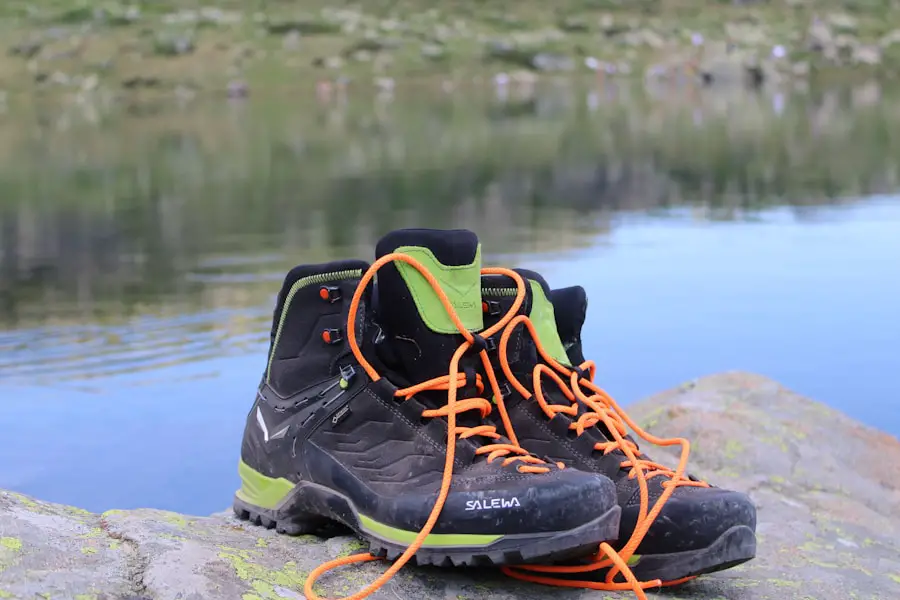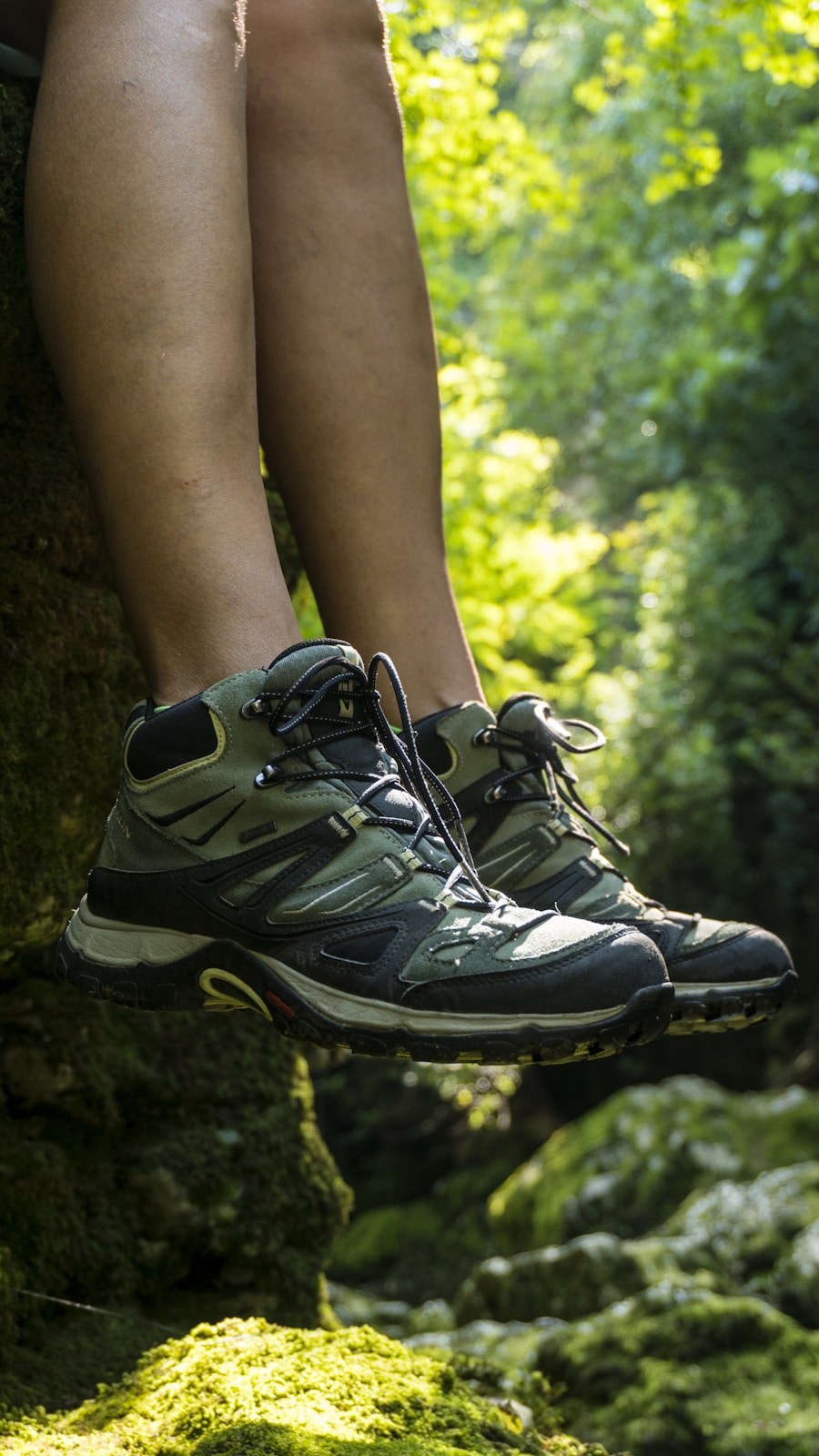Selecting the appropriate hiking shoes is a critical decision for anyone who enjoys exploring the great outdoors. The right footwear can significantly enhance your hiking experience, providing comfort, support, and protection against the various challenges that nature presents. Hiking shoes are not merely an accessory; they are an essential piece of gear that can influence your performance and safety on the trail.
Poorly chosen footwear can lead to blisters, discomfort, and even injuries, which can turn an enjoyable hike into a painful ordeal. Therefore, understanding the importance of selecting the right hiking shoes is paramount for both novice and seasoned hikers alike. Moreover, the right hiking shoes can improve your overall efficiency on the trail.
When your feet are well-supported and comfortable, you can focus on the beauty of your surroundings rather than the discomfort of your footwear. This is particularly important on longer hikes where fatigue can set in quickly. Shoes that fit well and provide adequate cushioning can help you maintain your energy levels, allowing you to enjoy the journey rather than just the destination.
Additionally, different types of hiking shoes are designed for specific conditions and terrains, making it essential to choose a pair that aligns with your intended hiking environment.
Key Takeaways
- Choosing the right hiking shoes is crucial for comfort, support, and safety on the trail.
- Different terrains require specific hiking shoe features, such as waterproofing for wet conditions and aggressive treads for rugged terrain.
- Look for features like durable construction, waterproofing, ankle support, and a good fit when choosing all-terrain hiking shoes.
- Top brands like Merrell, Salomon, and Keen offer popular models known for their quality and performance on all terrains.
- Properly fitting hiking shoes should have enough room for toe movement, a snug heel fit, and the ability to accommodate thick socks.
Types of Terrains and Their Specific Hiking Shoe Requirements
Hiking terrains vary widely, from rocky mountain paths to muddy forest trails, and each type demands specific features in hiking shoes. For instance, rocky terrains require shoes with excellent traction and durability to withstand sharp stones and uneven surfaces. A sturdy sole with deep lugs is essential for providing grip and stability on such challenging ground.
Shoes designed for rocky trails often feature reinforced toe caps to protect against impacts and abrasions, ensuring that your feet remain safe during your hike. Conversely, muddy or wet terrains necessitate shoes that are not only waterproof but also have good drainage capabilities. Shoes made from breathable materials with waterproof membranes can keep your feet dry while allowing moisture to escape.
Additionally, lightweight shoes with flexible soles can help you navigate through slippery conditions more effectively. In contrast, sandy or loose terrains may require shoes with a wider toe box to accommodate foot expansion and prevent sand from entering the shoe. Understanding these specific requirements based on terrain type is crucial for selecting the right footwear for your hiking adventures.
Features to Look for in All-Terrain Hiking Shoes

When searching for all-terrain hiking shoes, several key features should be prioritized to ensure versatility and performance across various environments. First and foremost, traction is vital; look for shoes with rubber outsoles that have multidirectional lugs designed to grip different surfaces effectively. This feature is particularly important when traversing steep inclines or slippery descents, where maintaining grip can prevent falls and injuries.
Another essential feature is cushioning and support. All-terrain hiking shoes should provide adequate arch support and cushioning to absorb shock during long hikes. A well-cushioned midsole can make a significant difference in comfort levels, especially on hard surfaces or uneven ground.
Additionally, consider the shoe’s weight; lighter shoes can reduce fatigue over long distances, while heavier models may offer more protection but at the cost of comfort. Breathability is also crucial; shoes made from mesh or other breathable materials can help regulate temperature and moisture, keeping your feet comfortable throughout your hike.
Top Brands and Models for All-Terrain Hiking Shoes
| Brand | Model | Weight (per pair) | Waterproof | Price |
|---|---|---|---|---|
| Salomon | X Ultra 3 Mid GTX | 1.1 lbs | Yes | 165 |
| Merrell | Moab 2 Mid WP | 2.4 lbs | Yes | 135 |
| Columbia | Newton Ridge Plus II | 2.2 lbs | Yes | 90 |
| Keen | Targhee II Mid WP | 2.2 lbs | Yes | 135 |
| Adidas | Terrex Swift R2 GTX | 1.3 lbs | Yes | 135 |
Several brands have established themselves as leaders in the hiking shoe market, known for their quality, durability, and performance across various terrains. Salomon is one such brand that offers a range of all-terrain hiking shoes designed for both casual hikers and serious adventurers. The Salomon X Ultra series is particularly popular for its lightweight construction and excellent grip, making it suitable for diverse conditions.
Merrell is another brand renowned for its commitment to comfort and performance. The Merrell Moab series has garnered a loyal following due to its cushioned footbed and rugged outsole, providing stability on rocky trails while remaining comfortable for extended wear. For those seeking a more minimalist approach, Altra’s Lone Peak line offers a zero-drop platform that encourages a natural foot position while still providing ample cushioning and traction.
Tips for Properly Fitting Hiking Shoes
Achieving the perfect fit for hiking shoes is essential to ensure comfort and prevent injuries during your hikes. One of the most important tips is to try on shoes at the end of the day when your feet are slightly swollen from daily activities. This will give you a more accurate representation of how the shoes will feel during long hikes.
When trying on shoes, wear the same type of socks you plan to use on your hikes; this will help you gauge the fit more accurately. Pay attention to key areas such as toe space and heel fit. There should be enough room in the toe box to wiggle your toes without feeling cramped, while the heel should fit snugly without slipping.
A good test is to walk around in the shoes on an incline; if your toes hit the front of the shoe, it may be too small. Additionally, consider using insoles or orthotics if you have specific foot conditions or require extra support; this can significantly enhance comfort during long hikes.
Maintenance and Care for All-Terrain Hiking Shoes

Proper maintenance and care of all-terrain hiking shoes are crucial for prolonging their lifespan and ensuring optimal performance on the trail. After each hike, it’s essential to clean your shoes to remove dirt, mud, and debris that can accumulate in crevices and affect their functionality. Use a soft brush or cloth to gently scrub away any stubborn dirt, paying special attention to the soles where traction is critical.
Additionally, drying your shoes properly after exposure to moisture is vital. Avoid placing them near direct heat sources like radiators or fireplaces, as excessive heat can damage materials and cause them to lose their shape. Instead, let them air dry at room temperature, removing insoles to facilitate faster drying.
Regularly checking for signs of wear and tear is also important; replace worn-out laces or damaged components promptly to maintain shoe integrity.
Reviews and Recommendations from Experienced Hikers
Experienced hikers often share valuable insights regarding their favorite all-terrain hiking shoes based on personal experiences in various conditions. Many recommend investing in models that have proven themselves over time in diverse environments. For instance, seasoned hikers frequently praise the durability of the Lowa Renegade GTX Mid boots for their waterproof capabilities and robust construction, making them ideal for challenging terrains.
Another popular recommendation comes from users of the Hoka One One Speedgoat series, known for its exceptional cushioning and lightweight design. Hikers appreciate how these shoes provide comfort over long distances while maintaining stability on uneven ground. Reviews often highlight how these models perform well in both wet and dry conditions, making them versatile choices for unpredictable weather.
Finding the Perfect All-Terrain Hiking Shoes
Finding the perfect all-terrain hiking shoes involves careful consideration of various factors including terrain type, shoe features, fit, maintenance practices, and recommendations from experienced hikers. By understanding these elements and taking the time to research different brands and models, you can make an informed decision that enhances your hiking experience. The right pair of shoes not only protects your feet but also allows you to fully immerse yourself in nature’s beauty without distraction or discomfort.
Whether you’re embarking on a short day hike or a multi-day trek through rugged landscapes, investing in quality all-terrain hiking shoes will undoubtedly pay off in comfort and performance on every adventure you undertake.
When it comes to hiking, choosing the right footwear is crucial for a comfortable and safe experience. If you’re looking for waterproof sneakers for your outdoor adventures, you may want to check out this article on 5 Must-Have Waterproof Sneakers for Your Spring 2025 Travels. This list provides some great options to keep your feet dry and protected while exploring the great outdoors.
Love travel? Join Our Facebook Community For More Tips.
FAQs
What are the best shoes for hiking?
The best shoes for hiking are typically hiking boots or hiking shoes that provide good ankle support, traction, and protection for your feet.
What features should I look for in hiking shoes?
When choosing hiking shoes, look for features such as waterproofing, breathability, durable outsoles, cushioning, and a secure fit to ensure comfort and support on the trail.
Are hiking boots or hiking shoes better?
The choice between hiking boots and hiking shoes depends on the type of hiking you plan to do. Hiking boots provide more ankle support and are better for rough terrain, while hiking shoes are lighter and more flexible, making them suitable for day hikes and less challenging trails.
Do I need waterproof hiking shoes?
Waterproof hiking shoes are recommended if you will be hiking in wet or muddy conditions, as they help keep your feet dry and comfortable. However, if you will be hiking in dry conditions, breathable hiking shoes may be more suitable.
How should hiking shoes fit?
Hiking shoes should fit snugly but not too tight, with enough room in the toe box to wiggle your toes. It’s important to try on hiking shoes with the socks you plan to wear while hiking to ensure the right fit.
